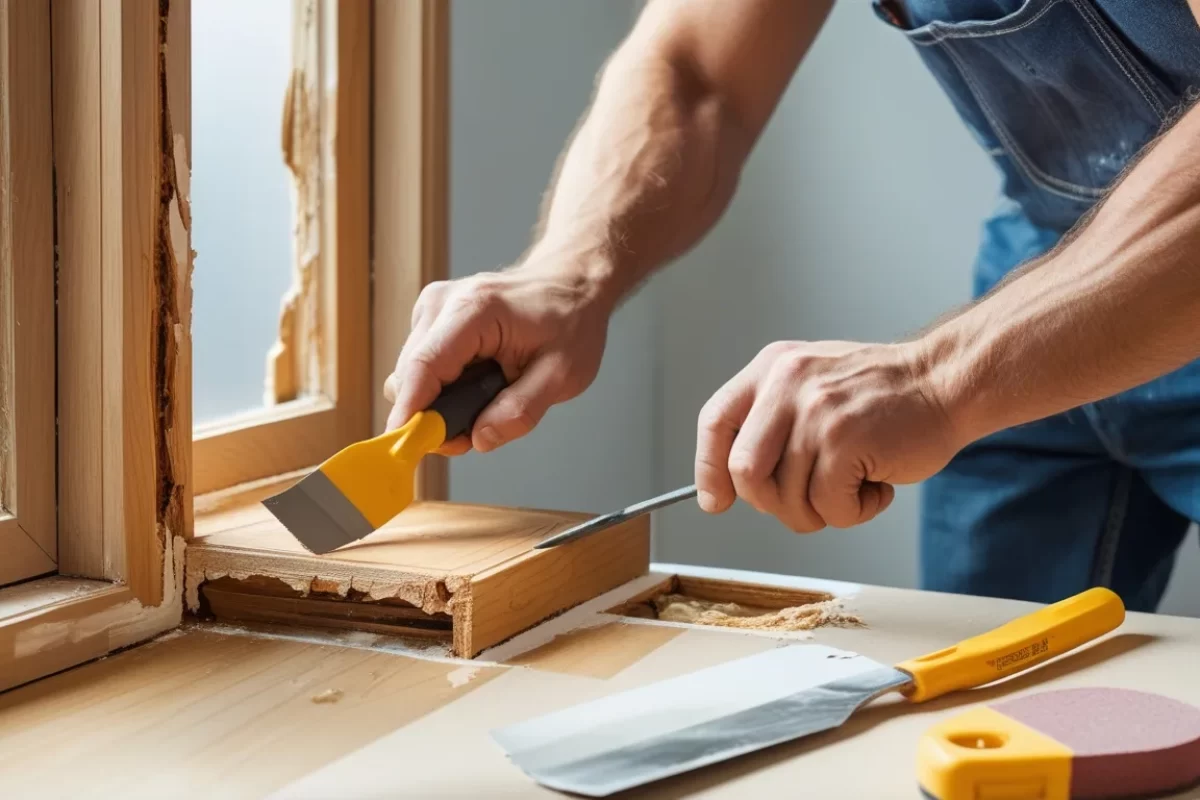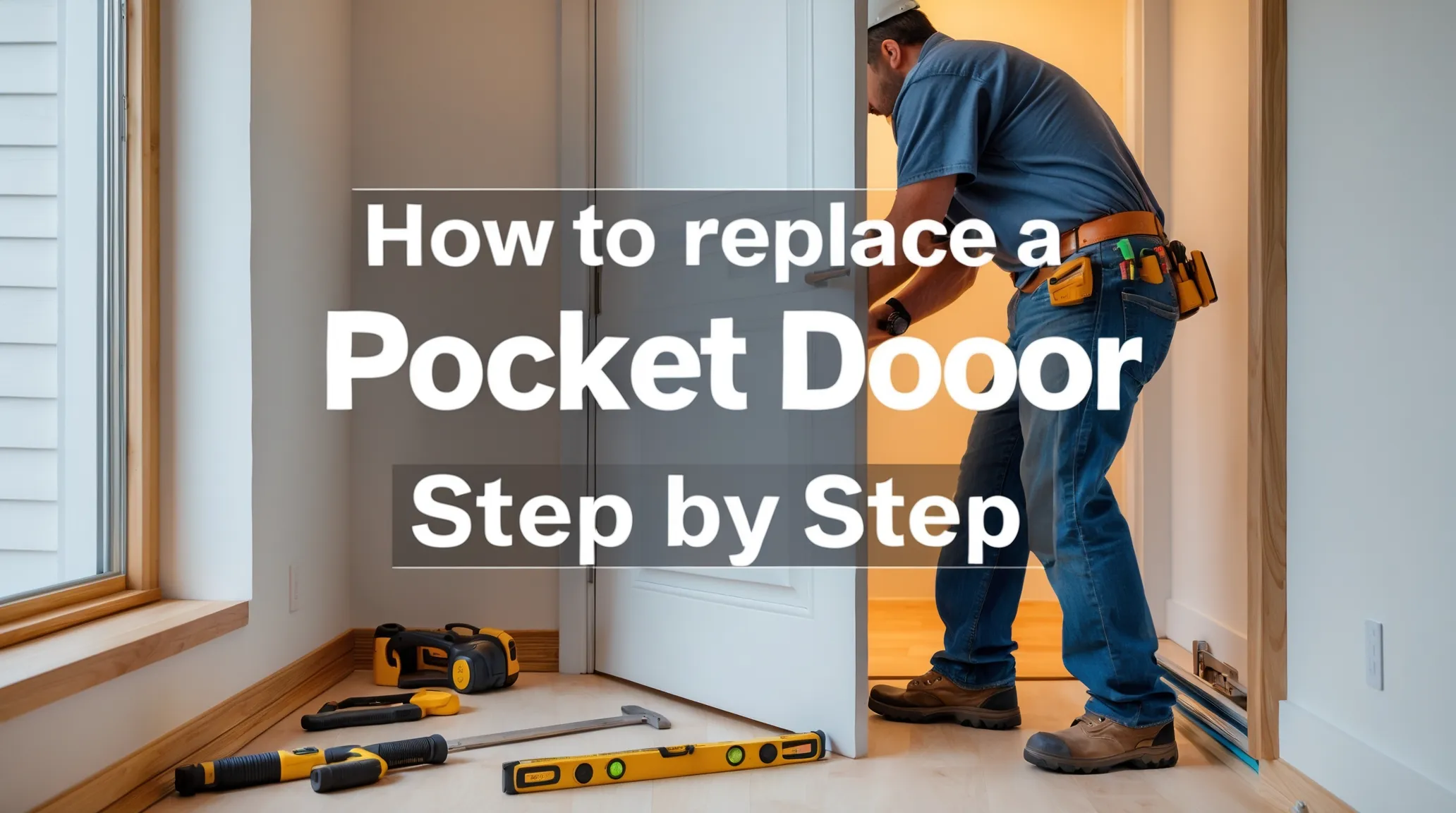Understanding Wood Rot: What Causes Door Jamb Damage
Wood rot happens when moisture gets into the wood and doesn’t dry out. Over time, this causes the wood to become soft and weak. Door jambs are especially at risk because they are close to the ground and get hit by rain, humidity, and even sprinkler water. If you notice soft spots, peeling paint, or a bad smell around your door frame, these might be signs of rot. Learning how to repair a door jamb with wood rot is important for keeping your home safe and strong. If caught early, the repair process is simple and can prevent bigger problems later.
Why Repairing a Rotted Door Jamb Matters More Than You Think
A rotted door jamb may seem like a small issue, but it can cause many problems. If the frame is weak, your door may not close properly. Gaps in the frame can let in bugs, rain, and cold air. The rot can also spread to other parts of the door or wall. Fixing the rot early helps protect the structure of your home. It also keeps your family safe by making sure your doors work like they should. Plus, it saves money since bigger repairs usually cost more.
How to Repair a Door Jamb Wood Rot: Step-by-Step Overview
Fixing wood rot in a door jamb isn’t hard when you follow the right steps. Start by finding out how much of the wood is damaged. Then, gather tools like a chisel, putty knife, wood filler, epoxy, sandpaper, and paint. Cut away the rotten parts using a sharp tool. Clean the area well. Next, apply wood hardener if the wood is still slightly soft. Then use a filler or epoxy to patch the hole. Once it dries, sand it smooth, prime it, and repaint the area. Following these simple steps helps bring back strength and looks to your door frame.
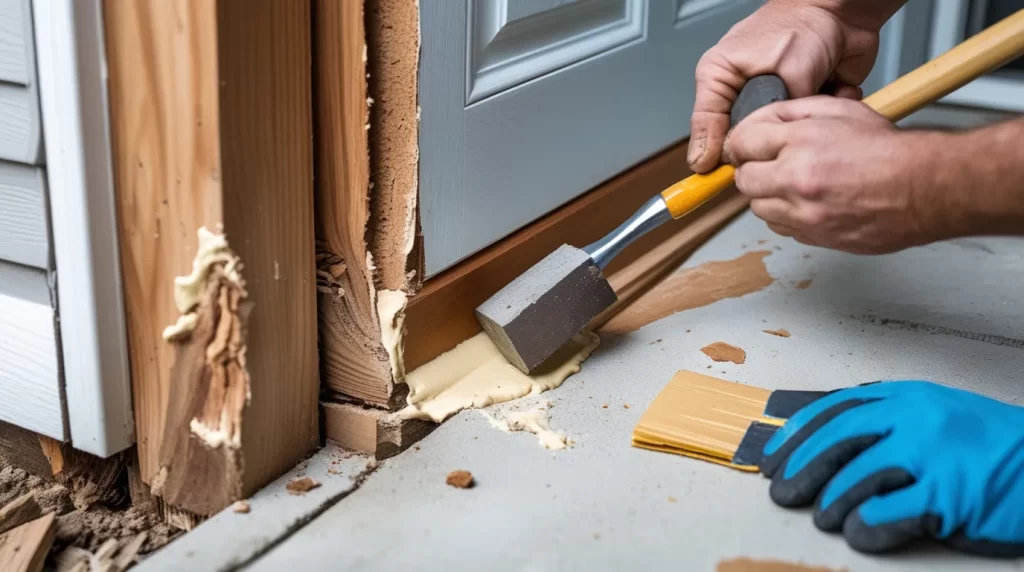
Signs of Wood Rot and How to Inspect Your Door Frame
It’s important to spot rot early. Look for soft, spongy spots along the bottom of the door frame. Press gently with your fingers or a screwdriver—if it sinks in easily, the wood is likely rotted. You may also see bubbling paint, cracks, or dark stains. Check for mold or mildew smells, too. Use a flashlight to check areas near the threshold and under the door. These spots often trap moisture. Do a full check every few months, especially after rainy seasons. Early detection can stop the rot from spreading and make the fix much easier.
Essential Tools and Materials You’ll Need for the Repair
Before you begin, make sure you have all the right tools. You’ll need a chisel, hammer, putty knife, utility knife, and a drill. For materials, gather wood filler or epoxy, wood hardener, caulk, sealant, primer, paint, and sandpaper (fine-grit). If you’re replacing any part of the wood, use pressure-treated wood to avoid future rot. Also wear gloves, safety glasses, and a dust mask. A clamp can help hold wood in place during the repair. Having the right tools makes your repair faster and smoother, and helps ensure the results last longer.
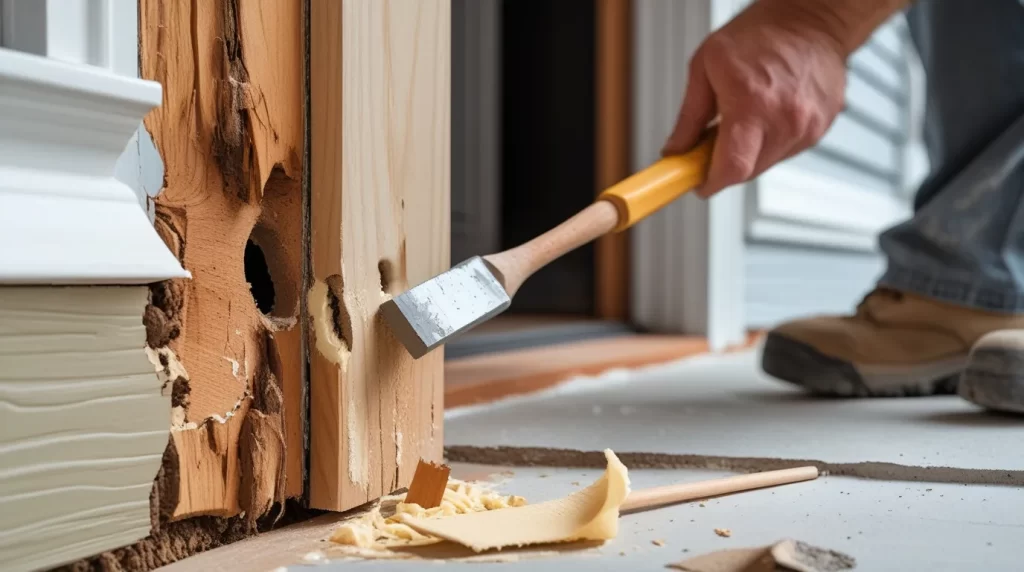
Removing Rotted Wood and Cleaning the Damaged Area
Start by cutting away the soft, damaged wood. Use a chisel and utility knife to remove all the rotted areas. Be sure not to stop until you reach healthy, solid wood. If any pieces of trim or molding are in the way, remove them carefully so you can put them back later. After removing the rot, clean the area. Use a stiff brush to remove dirt and loose fibers. If you’re using a wood hardener, apply it now. Let it soak into the surrounding wood. This step helps strengthen soft wood and prepares the surface for filler.
Using Wood Filler or Epoxy to Repair the Door Jamb
Once the area is clean and dry, it’s time to apply the filler. If the hole is small or shallow, use wood filler. For deeper damage, an epoxy wood filler or wood paste repair works better. Mix the epoxy if needed, then use a putty knife to press it into the damaged space. Shape it to match the door jamb’s original form. Be sure to overfill slightly because the material may shrink as it dries. Let it cure fully, which may take a few hours. After curing, the filler will be hard and ready for sanding.
Sealing, Sanding, and Priming the Repaired Surface
When the filler or epoxy is dry, sand the area with fine-grit sandpaper until it’s smooth and even with the rest of the door jamb. Wipe away dust with a damp cloth. Next, apply a primer that is designed for exterior wood. This seals the filler and protects it from moisture. Allow the primer to dry before continuing. Priming helps paint stick better and keeps the repair looking great over time. Don’t skip this step—it’s key to long-lasting results.
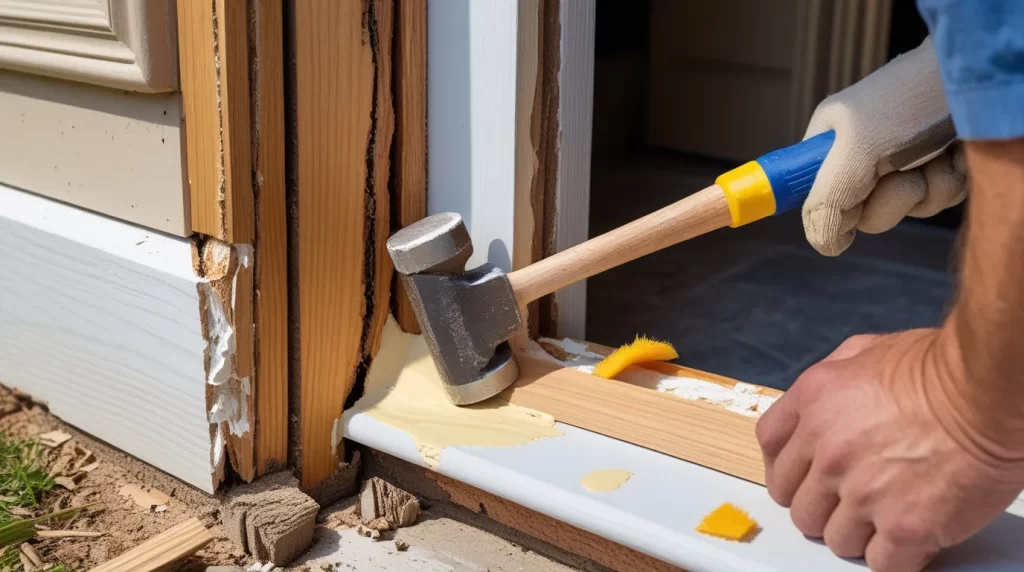
Painting and Finishing Touches for a Seamless Repair
Now that the primer is dry, it’s time to paint. Choose a paint that matches your existing door jamb and is made for exterior use. Apply at least two coats for good coverage and protection. Let the paint dry between coats. After painting, you can add caulk along the edges where the frame meets the wall to block moisture. If you removed any trim or molding earlier, reattach it now. The goal is to make your repair blend in so well that no one can tell there was damage before.
Door Jamb Rot Repairs in Irvine, CA: What Local Homeowners Should Know
In Irvine, CA, homes often face wood rot because of humidity, sprinkler systems, and coastal moisture. Door jambs near the ground or under awnings can trap water, making them prone to damage. That’s why homeowners here need to do regular checks and quick repairs. Keeping wood sealed, painted, and dry is the best way to prevent rot. When rot does happen, fast action keeps it from spreading to nearby trim or walls. Simple, routine care can save time, money, and protect your home’s structure.
Trust Repair Champions for Expert Repair Advice and Lasting Solutions
If you ever feel unsure about fixing wood rot yourself, don’t worry—Repair Champions is here to help. Our team has the knowledge, tools, and experience to get your door jambs back in shape quickly and safely. We understand the common wood issues that Irvine homes face and offer solutions that last. Whether you need guidance, a full repair, or just want to make sure it’s done right, Repair Champions is your trusted partner in protecting your home.
Rotten door jams don’t have to be a big problem. With a few tools, some time, and the right steps, you can fix the damage and protect your door frame from future rot. Don’t wait for the damage to spread—repair it early and keep your home safe and strong.

